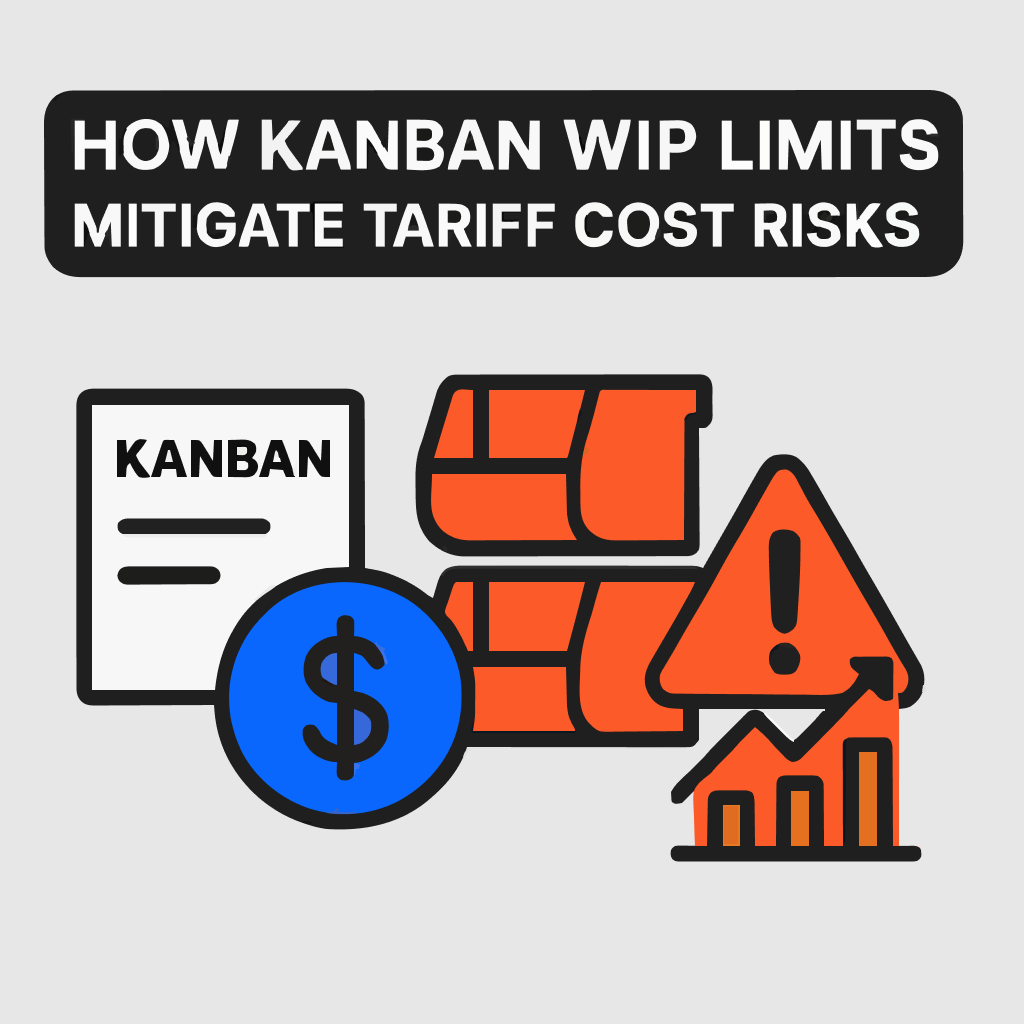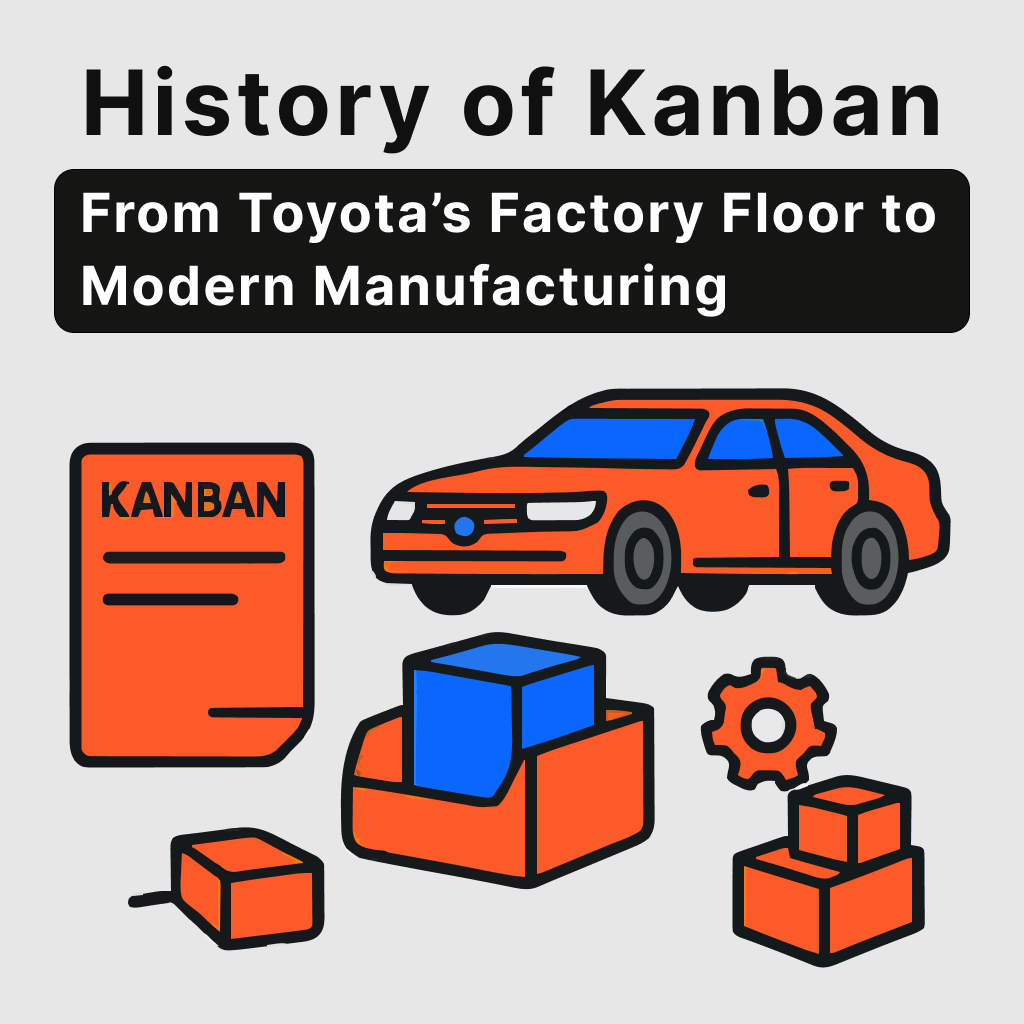Head-to-Head Comparison: JIT vs Kanban for Stockout Prevention Excellence
Understanding the practical differences between these systems will help you make the best choice for your manufacturing operation:
System Architecture and Approach
- Just-in-Time Inventory: Operates as a push system driven by forecasts and predetermined schedules. Production decisions flow from demand predictions through your entire operation.
- Kanban: Functions as a pull system activated by actual consumption. Materials move through your system only when needed, creating natural demand-driven flow.
Inventory Level Philosophy
- JIT Inventory Management: Aims for near-zero inventory levels, viewing stock as waste to be eliminated wherever possible.
- Kanban: Maintains controlled, minimum inventory levels including strategic safety stock positioned to prevent disruptions and reduce stockout risk.
Response to Market Changes
- Just-in-Time Inventory: Shows slower reaction times to sudden demand changes because adjustments require forecast revisions and system-wide scheduling updates.
- Kanban: Demonstrates exceptional responsiveness through real-time visual signals that trigger immediate action when conditions change, significantly reducing stockout probability.
Resilience Against Disruptions
- Just-in-Time Inventory: Shows higher vulnerability to supply chain disruptions due to minimal buffer stock and tight scheduling requirements, contributing to the $1.8 trillion in annual inventory distortion losses.
- Kanban: Offers superior resilience through safety stock buffers and visual management systems that quickly identify and address potential problems before they become stockouts.
Stop Stockouts Before They Start
Lorem ipsum dolor sit amet, consectetur adipiscing elit. Suspendisse quis orci nec diam iaculis cursus. Curabitur fermentum lorem nec posuere egestas.
Make Free Reorder CardsWhy Kanban Delivers Superior Manufacturing Resilience
Embracing Flexibility in an Uncertain World
Kanban's pull system design makes it inherently more flexible and adaptable to the demand fluctuations and supply chain uncertainties that define modern manufacturing. The data supporting this advantage is compelling: while JIT systems struggled during recent global disruptions, Kanban-based operations maintained better stability through their consumption-driven approach.
When market conditions shift unexpectedly, Kanban systems adjust naturally through their consumption-driven triggers. This flexibility becomes invaluable when dealing with seasonal variations, product launches, or changing customer preferences.
The Power of Proactive Problem-Solving
The visual nature of Kanban creates opportunities for proactive inventory management that traditional systems simply cannot match. Teams can literally see potential shortages developing and take corrective action before they become critical problems, directly addressing the customer behavior research showing that 65% of customers develop negative perceptions of brands with regular stockouts.
This visibility extends beyond just inventory levels. Teams can identify bottlenecks, workflow inefficiencies, and improvement opportunities that might remain hidden in traditional systems. The result is continuous improvement that strengthens your entire operation.
Strategic Safety & Buffer Stock: Your Insurance Policy
The deliberate inclusion of buffer and safety stock in Kanban systems represents a crucial differentiator from strict JIT models. This buffer stock acts as insurance against unforeseen disruptions, providing the breathing room needed to maintain operations during challenging periods.
Rather than viewing this inventory as waste, Kanban recognizes it as a strategic investment in operational stability. The key lies in calculating optimal buffer levels that provide protection without creating excessive carrying costs.
Reducing Forecast Dependency
While forecasting remains valuable, Kanban's reliance on actual consumption data for replenishment decisions dramatically reduces the risk associated with inaccurate predictions as demonstrated by research. This data-driven approach creates more reliable inventory management that adapts to real-world conditions rather than theoretical projections.
Achieve Manufacturing Excellence By Picking the Right Inventory Management Methodology
The debate between just-in-time inventory and Kanban isn't about choosing between efficiency and wastefulness. Both systems are born from the same Lean philosophy: to create a smarter, more streamlined manufacturing process. However, the path to achieving that goal is where they diverge, and in today's volatile market, that difference is everything.
We've seen that while JIT's forecast-driven "push" system promises the ultimate in cost savings by aiming for zero excess inventory, it creates a high-stakes tightrope walk. A single unexpected delay or demand spike can send production grinding to a halt. In contrast, Kanban’s consumption-based "pull" system offers a powerful alternative. By using visual signals and strategic safety stock, it builds a resilient operation that responds to reality, not just predictions. It accepts that uncertainty is inevitable and provides the tools to navigate it without sacrificing lean principles.
Ultimately, with $1.8 trillion in losses on the line and the loyalty of nearly three-quarters of your customers at stake, the choice becomes clear. The question isn't just "How little inventory can we get away with?" but rather, "How can we build a system that is both lean and unbreakable?"
The path forward lies in optimizing your inventory, not just minimizing it. By embracing the visual, adaptable power of Kanban, you can move beyond simply reacting to disruptions and begin proactively building an operation that thrives in the face of them. The ability to see your workflow, anticipate needs, and protect your production flow isn't just good practice—it's your ultimate competitive advantage.
%201.svg)








.svg)














.svg)
.svg)

.svg)